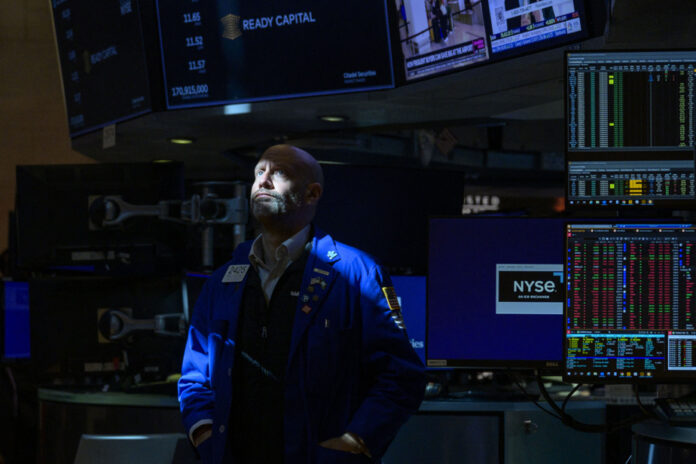(New York) The New York Stock Exchange ended lower on Wednesday, seizing on the downgrade of the United States’ rating by Fitch as an excuse for a pause, in a market that continued to rise.
The Dow Jones returned 0.98%, the NASDAQ slipped 2.17% and the broader S
The Dow Jones remained on 16 positive sessions in 17 trading days.
“It was time for a correction for the market,” commented Quincy Krosby of LPL Financial and “Fitch’s report was the trigger for this turnaround.”
The rating agency on Tuesday downgraded the United States’ rating by one notch from AAA, the highest, to AA.
A decision justified, according to Fitch, by the repeated political crises around the budget and the debt, and concerns about the acceleration of public spending.
The New York market has tensed up somewhat, the VIX index, which measures the nervousness of operators, rising to its highest level in a month, even if it remains low on historical average.
Sign that this announcement was, for Wall Street, an excuse for a consolidation more than a shock, the bond market reacted calmly.
The yield on 10-year US government bonds rose only slightly, to 4.07%, from 4.04% the previous day’s close.
“What Fitch said is important, […] but Moody’s hasn’t followed, for the moment, when they have a greater weight in the market,” argued Quincy Krosby to explain the weak reaction of the investors, while an equivalent decision by the Standard and Poor’s agency in August 2011 caused an earthquake.
Moody’s, third major agency with S
The New York Stock Exchange found no comfort in the ADP report, which showed that 324,000 jobs had been created in July in the private sector, almost double the 190,000 positions that economists expected .
“Wall Street tends to ignore the ADP report, let alone because its new (counting) methodology is only a year old,” Edward Moya of Oanda said in a note about a indicator traditionally considered unreliable.
The lower risk appetite sparked by Fitch’s announcement and the small rise in yields worked against equities, especially the big caps in the tech sector.
The darling of artificial intelligence (AI), Nvidia, slipped (-4.81%), as did Microsoft (-2.63%), Meta (-2.60%) or Amazon (-2 .64%), which publishes its results Thursday, after the stock market, just like Apple (-1.55%).
On the Dow Jones side, a few so-called defensive stocks, i.e. less sensitive to the economic situation, have shone, such as Johnson
Starbucks also fared well (0.86%), despite lower-than-expected revenues in the second quarter. While the international market has recorded significant growth, the average amount per order has stalled, even falling in China.
Elsewhere on the stock exchange, semiconductor maker AMD fell (-7.02%) despite better-than-consensus results and cautiously optimistic forecasts.
Investors judged that these figures were not sufficient to justify the valuation of the title, which has doubled since October.
New York-listed Italian automaker Ferrari (-1.28%) missed out on better-than-expected quarterly results and higher guidance for the year. The new earnings projection is, however, only an alignment with those of analysts.
The Israeli laboratory Teva, listed on Wall Street, jumped (11.58%) after reporting higher turnover than projected by the New York market, in particular thanks to its treatment for Huntington’s disease , a degenerative neurological condition.
The Toronto Stock Exchange closed down more than 300 points, a victim of the general decline.
The composite index S
In the currency market, the Canadian dollar traded at an average rate of 74.99 US cents, down from 75.24 US cents on Tuesday.















